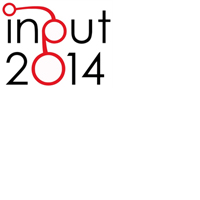Urban Land Uses and Smart Mobility
Abstract
The object of this work consists of the will to define a renewed relationship between spatial planning and transport systems, which focuses attention on road safety, whereas to date the studies on this relationship have mainly examined the transport impacts on land use. Therefore, in addition to the analysis of the physical characteristics of road infrastructure, there is a need to examine which urban land uses can generate points of risk, both in terms of attraction of vehicles and pedestrian flows as well as in terms of concentration of vulnerable road users, in order to organize a complete information and telecommunication system for road safety. In short, considering a specific testing ground, some urban land uses have been located, with relative dimensional analysis and characterization of access conditions in typological-functional terms: services (schools, healthcare structures, sports facilities); tertiary/production industry (wholesale, shopping centres, industrial sites); tourism sector (hotels, resorts, historical and cultural heritage). The collection of information, corresponding to mapping of prospective risk factors, represented the basis for the entry of specific data within a wider reference database.Downloads
References
Batty M. (1997), Cellular automata and urban form: a primer, Journal of the American Planning Association, 63, 264-274.
Coppola P., Nuzzolo A. (2006), Accessibilità extraurbana e localizzazione delle attività socioeconomiche. XXVII Conferenza italiana di Scienze Regionali "Impresa, mercato, lealtà territoriale". Pisa.
Ferrand N. (2000), Multi-reactive agents paradigm for spatial modelling. In: Fotheringham A.S., Wegener M. (eds.), Spatial Models and GIS: New Potential and New Models. London: Taylor & Francis. 176-184.
Landis J.D., Zhang M. (1998), The second generation of the California urban futures model. Part 1: Model logic and theory, Environment and Planning B: Planning and Design, 25, 657-666.
Palermo A., Francini M. (2013), The impact of urban uses in road safety. XX Conferenza Internazionale Vivere e camminare in città - La sicurezza degli utenti deboli della strada. Brescia.
Salomon I., Waddell P., Wegener M. (2002), Sustainable life styles? Microsimulation of household formation, housing choice and travel behaviour. In: Black W.R., Nijkamp P. (eds.), Social Change and Sustainable Transport. Indiana: Indiana University Press. 125-131.
Wegener M., Spiekermann K. (1996), The potential of microsimulation for urban models. In: Clarke G. (ed.), Microsimulation for Urban and Regional Policy Analysis. European Research in Regional Science 6. London: Pion. 146-163.

Copyright (c) 2014 Tema. Journal of Land Use, Mobility and Environment

This work is licensed under a Creative Commons Attribution 4.0 International License.
Authors who publish in this journal agree to the following:
1. Authors retain the rights to their work and give in to the journal the right of first publication of the work simultaneously licensed under a Creative Commons License - Attribution that allows others to share the work indicating the authorship and the initial publication in this journal.
2. Authors can adhere to other agreements of non-exclusive license for the distribution of the published version of the work (ex. To deposit it in an institutional repository or to publish it in a monography), provided to indicate that the document was first published in this journal.
3. Authors can distribute their work online (ex. In institutional repositories or in their website) prior to and during the submission process, as it can lead to productive exchanges and it can increase the quotations of the published work (See The Effect of Open Access)
